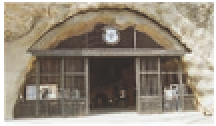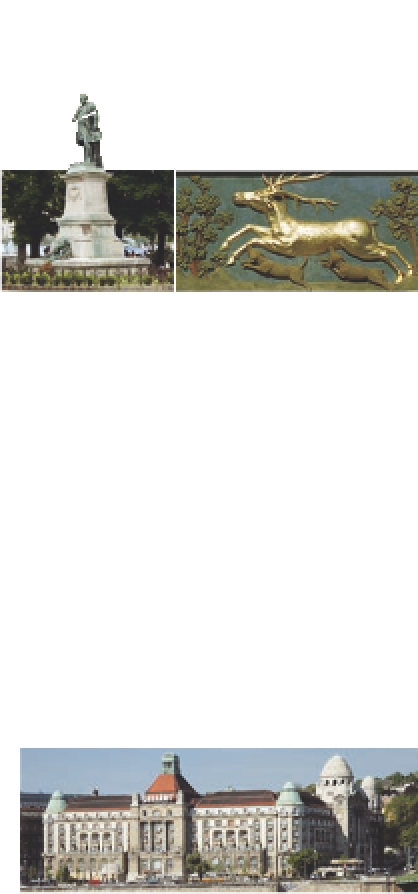Travel Reference
In-Depth Information
Left
Entrance to Cave Church
Centre
Miklós Ybl Square
Right
Bas-relief, Golden Stag House
Gellért and Tabán
A
NCIENT SUPERSTITIONS AND MEDIEVAL MYSTERIES
surround the areas
of Gellért and Tabán. It is believed that Gellért Hill, which rises 140 m
(460 ft) on the western bank of the Danube, was the scene of Bishop Gellért's
death. In 1046, he was thrown from the top in a sealed barrel by enraged
citizens, for attempting to convert them to Christianity. The hill was later the site
of the Habsburgs' sinister Citadel, which even today evokes a shudder among
locals. At the foot of the hill, the luxurious Gellért Hotel and Baths stand as a
reminder of a gentler age. For centuries, Tabán was the city's most bohemian
district, illed with numerous bars and gambling dens, until
urban planners created the parks and residential areas that
command some of the highest prices in the city today.
Left
Liberation Monument
Right
Façade of the magniicent Gellért Hotel
Sights
1
Gellért Baths
2
Cave Church
3
Gellért Monument
4
Queen Elizabeth
Monument
5
Citadel
6
Liberation Monument
7
Tabán
8
Tabán Parish Church
9
Miklós Ybl Square
0
Golden Stag House
'=6$
75
'FSFODJFLUFSF
05&,86
75
4AB N
'%5(17(,
75
"ELV ROS
-$
(U]VªEHWK®G
(OL]DEHWK%ULGJH
'ELL¨RT
8)
6]DEDGV¢JK®G
/LEHUW\%ULGJH
(FMMÏSU
IFHZ
7
6=(17
*(//57
75
ZBSET
NFUSFT
68














































































































































































































































































































































































































































